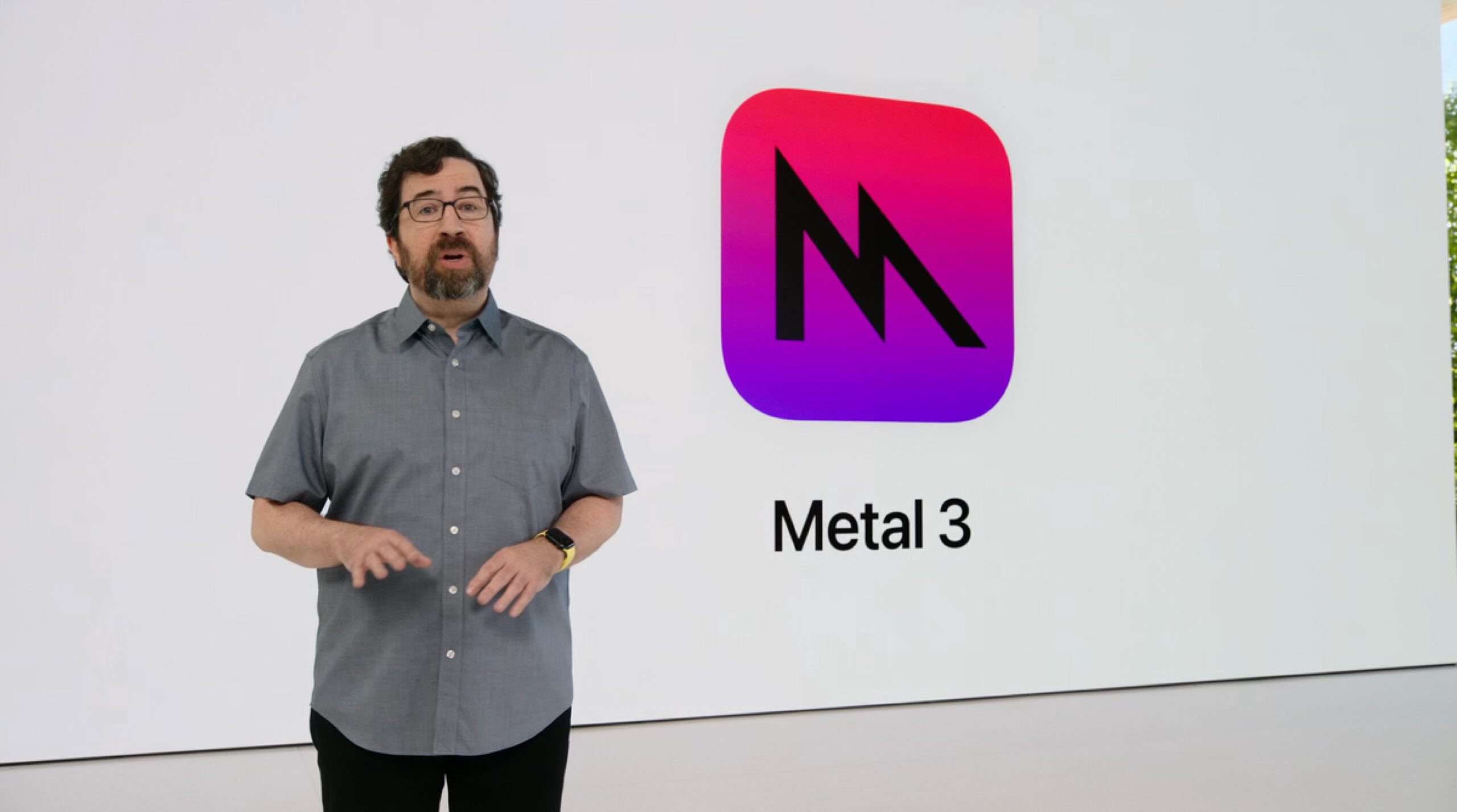Metal 3 brings massive new updates to Apple’s graphics and compute API. These updates include MetalFX Upscaling, fast resource loading, offline compilation, mesh shaders, optimized ray tracing, and accelerated machine learning. Here is a breakdown of these new features.

Metal 3
Fast resource loading
Games often run into situations where fast loading of many small requests is required to serve high-quality visuals. Typically, such requests rely on storage APIs which have been designed for large requests, however, these are not efficient for many smaller requests. Fast resource loading in Metal 3 helps with efficiently serving many small requests and uses a multithreaded command model as graphics and compute. Many requests can be queued as commands for asynchronous submission.
Resources are loaded directly to Metal buffers and textures which helps save development and transfer time, and also makes it easy to synchronize graphics, compute and file loading operations.
Offline compilation
Offline compilation eliminates the need to generate shader binaries upon the first launch of a game. Shader binaries can be moved to project build time, which helps reduce load time and stutters.
MetalFX Upscaling
MetalFX Upscaling uses temporal or spatial solutions for high-performance upscaling and anti-aliasing while rendering graphics. This helps with faster performance and high frame rates in games.
Mesh shaders
Mesh shaders help with a flexible two-stage geometry pipeline. These are beneficial for apps and games which require culling, LOD selection, and procedural geometry generation. Most of these are found commonly in modern games nowadays.
Optimized ray tracing
Metal 3 improves almost everything about ray tracing on Apple Silicon. It now features GPU-driven ray tracing, which should help in improved performance and optimization. This helps offload many activities from the CPU, which are performed faster no the GPU.
Accelerated machine learning
Metal 3 features GPU-accelerated training for neural networks and machine learning on Macs. This helps tremendously with performance for image and graphics processing. TensorFlow performs up to 16x faster on Mac Studio, thanks to GPU acceleration in Metal 3. Similar improvements can be seen on PyTorch and other apps and frameworks.
These advanced features are what will make games like No Man’s Sky, Resident Evil Village and GRID Legends possible on Mac and iPad.
Compatibility
Metal 3 will be available on Apple devices with the following SoCs or GPUs:
iOS/iPadOS
- A13 Bionic and later/M1
- iPhone 11
- iPhone 11 Pro
- iPhone 11 Pro Max
- iPhone SE (2nd gen)
- iPad (9th gen)
- iPad Air (4th gen)
- iPad mini (6th gen)
- iPad Pro (5th gen)
macOS
- Apple Silicon
- AMD Vega, AMD 5000-series, 6000-series
- Intel UHD Graphics 630, Intel Iris Pro Graphics
Metal 3 is available as part of iOS 16, iPadOS 16, and macOS Ventura developer betas right now. The final version of these operating systems will be available this Fall for all users.